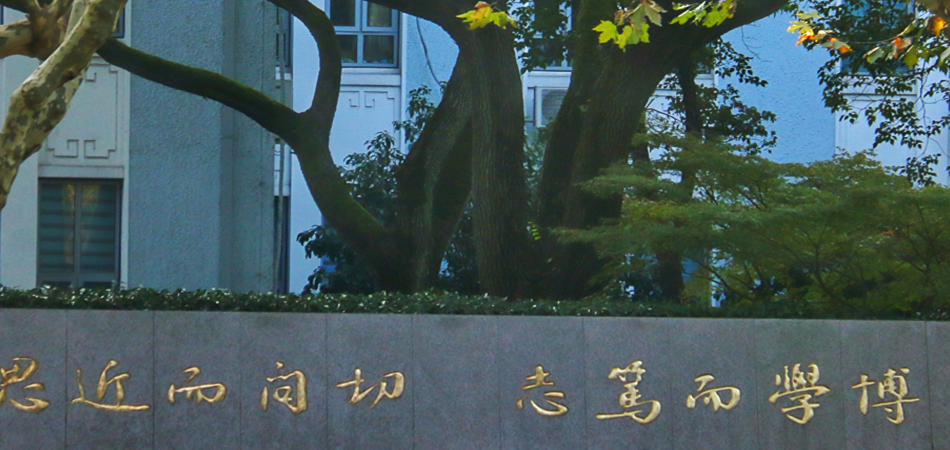
Jilie Kong
Analytical Chemistry
Professor
 bkong@fudan.edu.cn
bkong@fudan.edu.cn
 Room A5023, Chemistry Building, Department of Chemistry, Fudan University 2005 Songhu Road, Yangpu District, Shanghai 200438, China
Room A5023, Chemistry Building, Department of Chemistry, Fudan University 2005 Songhu Road, Yangpu District, Shanghai 200438, China
 86-21-31249176
86-21-31249176
Research Interests
Soft Interface Material & Device:
1) Soft Interface Probes and Devices for Imaging & Sensing Applications
2) Integrated Soft Interface Devices for Disease Diagnosis & Treatment
3) Soft Interface Materials and Devices for Energy Storage & Conversion
Academic Appointments
Executive Committee Member, Australia-China Association of Scientists and Entrepreneurs
Committee Member, Chinese Association of Professionals and Scholars, Australia
Honorary President, Student Club of Fudan-The Royal Society of Chemistry
Vice President, Professional Committee of World External Treatment Technology
Prizes and awards
The Vice-Chancellor's Commendation for Doctoral Thesis Excellence, Monash University, Australia, 2016
The Mayor's Award of Youth Development and Innovation, Shanghai, 2015
The Academic Star in Victoria, Melbourne, Australia, 2015
Top-Grade Award of BAOSTEEL Education Foundation, 2014
Grand Prize, Dow Sustainability Innovation Student Challenge Award, 2013
Scholarship Award for Excellent Doctoral Student, Ministry of Education, China, 2012
Scientific and Technical First-prize Award of CAIA, China, 2011
Biography
2016.12- Professor, Department of Chemistry, Fudan University
2016.02-2016.12 Post-Doctoral Fellow, Department of Material Science and Engineering, Stanford University
2015.05-2016.01 Research Fellow, Department of Chemical and Biomolecular Engineering, The University of Melbourne
2012.09-2015.05 Ph.D., Department of Chemical Engineering, Monash University & Department of Chemistry, Fudan University
2013.01-2015.12 Joint Member, Innovation Center, The Collaborative Innovation Center of Chemistry for Energy Materials, 2011-Program, CHINA
Teaching
Soft Material & Device Engineering
Key Publications
B. Kong, L. Zu, C. Peng, Y. Zhang, W. Zhang, J. Tang, C. Selomulya, L. Zhang, H. Chen, Y. Wang, Y. Liu, H. He, J. Wei, X. Lin, W. Luo, J. Yang, Z. Zhao, Y. Liu, J. Yang, D. Zhao, Direct Super-Assemblies of Freestanding Metal-Carbon Frameworks Featuring Reversible Crystalline-Phase Trans-formation for Electrochemical Sodium Storage, J. Am. Chem. Soc., 2017, ASAP
B. Kong, J. Tang, Z. Y. Zhang, T. Jiang, X. Gong, C. Peng, J. Yang, Y. Wang, X. Wang, G. Zheng, C. Selomulya, D. Zhao, Incorporation of Well-Dispersed Sub-5 nm Graphitic Pencil Nanodots into Ordered Mesoporous Frameworks, Nature Chemistry, 2016, 8, 171
B. Kong, C. Selomulya, G. Zheng, D. Zhao, New Faces of Porous Prussian Blue: Interfacial Assembly of Integrated Hetero-Structures for Sensing Applications, Chem. Soc. Rev., 2015, 44, 7997
B. Kong, J. Tang, Y. Zhang, C. Selomulya, X. Gong, Y. Wang, H. Wu, W. Wang, X. Sun, Y. Wang, G. Zheng, D. Zhao, Branched Artificial Nanofinger Arrays by Mesoporous Interfacial Atomic Rearrangement, J. Am. Chem. Soc., 2015, 137, 4260
B. Kong, D. Sikdar, J. Tang, M. Premaratne, X. Wang, Y. Wang, H. Wu, W. Wang, L. Wei, G. Zheng, C. Selomulya, D. Zhao, Interfacial Assembly of Mesoporous Nanopyramids as Ultra-sensitive Cellular Interfaces Featuring Efficient Direct Electrochemistry, NPG Asia Mater., 2015, 7, e204
B. Kong, J. Tang, C. Selomulya, W. Li, J. Wei, Y. Fang, G. Zheng, D. Zhao, Oriented Mesoporous Nanopyramids as Versatile Plasma Enhanced Interfaces, J. Am. Chem. Soc., 2014, 136, 6822
B. Kong, J. Tang, Z. Wu, C. Selomulya, H. Wang, J. Wei, G. Zheng, D. Zhao, Bio-inspired Porous Antenna-like Nanocube/Nanowire Heterostructure as Ultrasensitive Cellular Interfaces, NPG Asia Mater., 2014, 6, e117
B. Kong, J. Tang, Z. Wu, J. Wei, H. Wu, Y. Wang, G. Zheng, D. Zhao, Ultralight Mesoporous Magnetic Frameworks from Interfacial Assembly of Prussian Blue Nanocubes, Angew. Chem. Int. Ed., 2014, 53, 2888
B. Kong, A. Zhu, C. Ding, X. Zhao, B. Li, Y. Tian, Carbon Dot–Based Inorganic–Organic Nanosystem for Two‐Photon Imaging and Biosensing of pH Variation in Living Cells and Tissues, Adv. Mater., 2012, 24, 5844
B. Kong, A. Zhu, Y. Luo, Y. Tian, Y. Yu, G. Shi, Sensitive and Selective Colorimetric Visualization of Cerebral Dopamine Based on Double Molecular Recognition, Angew. Chem. Int. Ed., 2011, 50, 1837








